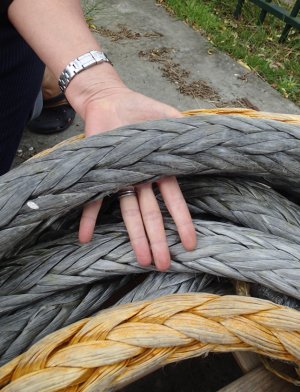RunAgroundHard
Well-Known Member
Maybe ... I don't Superintend Cruise Ships - but I can soon ask my Brother if I was really that interested .. who conducts Classification Society Inspections of them in Florida.
New drill ship from Korea, owner changed out supplied mooring lines for dyneema, this was start of year. The difference in weight and volume is significant. Classification Society is DNV, UK flagged, inspected by MCA.
ABS is common class society for many vessels as they are lower cost. Depends on who the owner has engaged rather than country. The drill ship changed from ABS to DNV as DNV offered certain notations that ABS did not, good for marketing.

